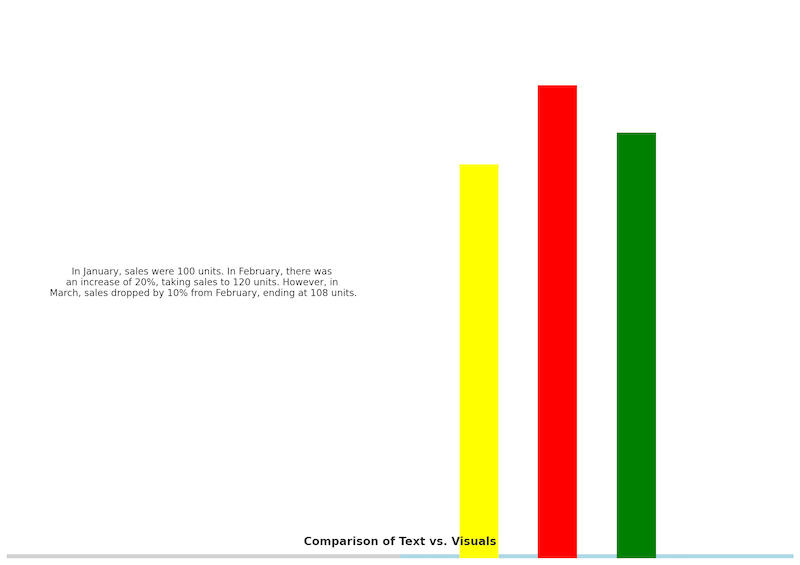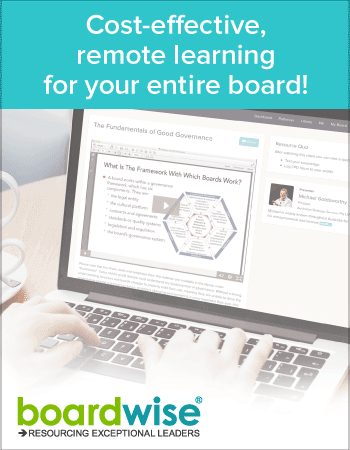10 Common Board Paper Problems & How to Fix Them
-
boardpacks
Board Packs 10 Common Board Paper Problems & How to Fix Them
For board meetings to be impactful, directors need board papers that clearly communicate the right information in an actionable manner.
Unfortunately, many board packs miss the mark on delivering materials that actually inform and empower directors.
Below we delve into the 10 most frequent complaints directors have about board papers. We provide concrete examples of each issue, explain the resulting negative impacts, and offer suggested solutions to help you to improve your board packs.
With more focused, relevant, and digestible information, directors can better execute their critical governance roles and responsibilities.
1. Board Papers are too long or dense
A top frustration for time-constrained directors is excessive excessively lengthy or technical writing. This makes board packs a chore to get through.
Directors have limited time to review materials before meetings. But they are often presented with tremendously lengthy, dense documents full of complex details.
For example, if a Chief Risk Officer report contains a 50-page narrative overview of 12 separate risk categories, followed by 30 pages of technical chart or a Chief Strategy Officer report running 45 pages covering multiple disjointed initiatives without clear prioritisation then directors are going to be overwhelmed.
This overwhelming density makes it painfully hard for directors to efficiently extract key points and identify crucial information.
Directors will become frustrated trying to isolate the critical 20% of content that deserves 80% of their attention. The natural tendency is to skim versus absorb the content, undermining effective and diligent preparation.
The downstream impacts of lengthy, dense board packs are:
-
Directors cannot readily identify the most significant issues, leading to overlooked areas of concern.
-
Reading fatigue causes directors to miss or forget important details when meetings commence.
-
Directors are reluctant to allocate the extensive time required to properly cover all materials.
-
Board meetings become ineffective venues for discussing priorities, as directors are ill-prepared to engage in productive discussion.
How to fix
To address this frequent complaint, aim for brevity, clarity, and simplicity. Be ruthless in filtering out unnecessary content to keep board papers focused exclusively on truly essential subject matter.
Break dense reports into concise executive summaries that call out the most critical details directors need to know to have context for upcoming discussions.
Use simple language, bullet points, charts, and other techniques to communicate clearly versus overwhelming with words.
Assign strict page limits to board reports to enforce brevity. If the Chief Legal Officer’s litigation summary runs 15 pages or more, directors are likely scanning versus reading intently. Look at it this way - treat directors’ time as more precious than your own.
2. Lack of Focus and Structure
Directors need board papers that are tightly focused on the objectives and key decisions for upcoming meetings. However, frequently board packs exhibit unclear structure and lack of focus. Materials meander across disparate topics without clear purpose.
For example, a CEO report containing a scattered mix of operational details, personnel changes, financials, strategic program updates, and various other matters without linkage to board meeting goals. Or a CFO report covering budget planning, capital allocation, expense analysis, new accounting policies, and other topics all in a single, sprawling document.
This absence of structure and focus significantly impedes director productivity.
Without tight alignment between board papers and meeting goals, directors struggle to identify the core issues amidst an unorganised avalanche of information. Critical matters blend into the noise.
The consequences of unfocused board papers include:
-
Directors cannot easily separate mission-critical priorities from organisational noise.
-
Boardroom discussions, even if guided by an effective agenda, wander across disjointed topics rather than converging on key decisions.
-
Directors feel frustrated trying to stitch together unclear or competing priorities.
-
Meetings become bogged down in tangents rather than driving progress on strategic goals.
How to fix
To address this issue, begin every board paper with clear statements of purpose and scope.
Use concise executive summaries to call out the most salient points directors need to grasp.
Organise supporting documents around core discussion topics for upcoming meetings, rather than defaulting to functional department perspectives.
Include a clear meeting agenda that connects specific documents to agenda topics to spotlight their relevance.
Apply a disciplined focus to help directors efficiently extract the crucial information they need to have constructive boardroom discussions and make wise, well-informed decisions.
3. Absence of Sufficient Context
Directors require appropriate background information and context to make fully informed assessments, evaluations, and judgments about the matters at hand.
However, frequently board papers presume too much baseline understanding or fail to establish the right context.
For example, a Chief Technology Officer proposal for a significant software platform investment that lacks market research data on relevant solutions, ignores previous attempts by competitors in this space, and does not explain how the investment aligns with strategic goals. Or a Chief Marketing Officer budget that does not benchmark variable spend levels against industry standards and omits data about ROI from existing marketing technology tools.
Without necessary context, directors lack the foundational understanding required to properly interpret analysis, discern smart options, comprehend risks, and evaluate decisions. Isolated facts float in a vacuum, obscured from significance.
The pitfalls of not establishing adequate context in board papers include:
-
Directors struggle to interpret the relevance of data points without surrounding perspective.
-
Lacking backstory, directors cannot constructively challenge assumptions and proposals.
-
Directors make decisions in a relative blind spot, unable to weigh options.
-
The board fails to exercise fully informed oversight as context gaps persist.
How to fix
To address this issue, take pains to establish robust context upfront in board papers before presenting recommendations and conclusions.
Provide a concise overview of market conditions, industry dynamics, and competitive forces related to the proposal at hand. Share relevant background - historical events, prior board discussions, past performance indicators - that formed the run-up to current issues.
Explain the reasoning, drivers, and expectations forming the basis for proposals. Ensure directors have the full landscape of contextual knowledge necessary to make wise judgments. Avoid isolating board papers from the surrounding strategic, economic, and operational ecosystem.
4. Weak Analysis of Options and Implications
Directors frequently express concerns about board papers that reflect inadequate rigour in analysing the options and issues presented for boardroom discussion. Simplistic analysis shortchanges directors of the insights they need to make intelligent choices.
For example, a geographical market expansion proposal listing only one possible country option rather than several, ignoring political risks, with financial projections based solely on simple linear extrapolation of domestic unit performance. Or a business case for a Merger & Acquisition that fails to account for potential integration and operational alignment challenges inherent in the deal.
These examples demonstrate superficial consideration of alternatives, risks, and impact. Without exercising due diligence in investigating multiple facets of significant decisions, management under prepares the board.
The risks of a thin analysis provided to directors include:
-
Directors lack reasonable assurance that recommendations are the best path forward amidst complex dynamics.
-
Unexamined assumptions can lead to blind spots for the board regarding risks.
-
Overly simplistic projections set unrealistic expectations around initiatives.
-
Directors cannot weigh alternatives if only presented with a single option.
How to fix
To address this frequent complaint, back up recommendations with thorough, multi-dimensional analysis of options, risks, and potential organisational impact.
Apply varied analytical lenses as appropriate - competitive assessment, market research, financial modelling, legal considerations, operational viability, scenario planning, statistical forecasts, and more.
Demonstrate to directors the diligent homework done to thoroughly vet proposals from multiple vantage points. Anticipate likely director concerns and questions, addressing these directly in briefing materials. Rigorous analysis provides directors the depth of understanding to make wise judgments.
5. Inclusion of Irrelevant Information
Directors express frustration when forced to wade through reams of facts, figures, and other content tangentially related, or outright irrelevant, to the core issues at hand.
For example, a Chief Partnership Officer report recounting recent conversations with various ecosystem partners, when only one prospective partner discussion has bearing on the upcoming board meeting. Or a Product Roadmap presentation covering numerous new features with no clear prioritisation or linkage to strategic goals.
This kind of “noise” obscures the truly relevant information directors need to discern.
The higher the ratio of pointless facts to material ones, the harder for directors to efficiently extract value and prepare for constructive meetings.
Dangers of including immaterial information in board packs include:
-
Directors waste precious time processing irrelevant information, diverting focus from critical matters.
-
Needle-in-a-haystack: directors struggle to determine what bears weight.
-
Directors gloss over or abandon board papers that lack relevance discipline.
-
Immaterial information cultivates blind spots or false directions rather than insight.
How to fix
Address this complaint by ensuring every document in the board pack directly connects to scheduled discussion topics and strategic objectives. Reference historical information only to the extent it provides meaningful context for current issues.
Cut reports that, while interesting, have no relevance for the upcoming meeting. Exclude anything extraneous or tangential, regardless of how important it seems to management. Remove any content that does not enrich director understanding of core issues at hand.
6. Lack of Conciseness and Brevity
With limited time to prepare, directors resent unnecessarily verbose and long-winded board papers. Directors favour materials that conscientiously respect their busy schedules. Lack of discipline resulting in inflated page counts or meandering narratives significantly hampers director productivity.
For example, a Chief Human Resources Officer providing multiple pages of prose about employee engagement survey design, methodology, and communication when only the key findings actually matter for the board’s talent oversight duties. Or a Chief Revenue Officer delivering a 15-page competitive pricing analysis when a two-page exhibit would sufficiently convey the key market deltas.
This tendency towards overwriting assures board packs require extra time directors don’t have. And it pushes critical content “below the fold” where directors are prone to overlook it.
Risks of not applying brevity and conciseness to board papers include:
-
Reading fatigue sets in as directors slog through overwritten material.
-
Directors skim versus absorb essential content buried in verbose documents.
-
bloated board packs discourage directors from properly preparing for meetings.
-
Critical details get missed among immaterial elaborations and redundant information.
How to fix
To address this, impose strict space constraints on board paper contents. Avoid wasting words and space on unnecessary prose. Strip out adjectives, adverbs, and other embellishments with no informational value. Use bullet points, charts, diagrams and other techniques to distill complex narratives into concise components. Edit rigorously to eliminate all non-essential text.
Treat directors’ reading time as precious. Exercise discipline to avoid inflated, long-winded documents that squander directors’ scarce preparation time. Enable directors to extract maximum understanding in minimum time.
7. Lack of Key Performance Metrics and Indicators
Directors expect board papers to contain the vital metrics, KPIs, financial indicators, and analytics required to properly evaluate organisational performance.
Yet frequently these vital barometers are missing or difficult to locate amid dense text.
For example, a marketing report on a recent campaign that lacks visitor, lead, and sales metrics to indicate ROI. Or a product development report that describes new features but omits data on user adoption of recent enhancements.
If a paper is devoid of factual indicators and benchmarks for quantifying progress, directors cannot accurately gauge if matters are trending positively or negatively. And they lack the numbers needed to ask insightful questions and make informed judgments.
Dangers stemming from the absence of key metrics in board reports include:
-
Blind spots form as directors lack measurable insights into progress and risks.
-
Lacking quantifiable indicators, sentiment replaces facts in evaluative discussions.
-
Directors accept reports at face value versus scrutinising underlying performance data.
-
Trends go undetected, limiting the board’s ability to oversee value creation.
How to fix
To address this, identify the key progress metrics for each functional area and board discussion topic. Prominently integrate these vital signs into board papers as standing features versus hiding in appendices. Provide context around trends, comparable, forecasts, industry benchmarks, and targets to enrich director interpretation.
Establish and adhere to a dashboard of standard metrics across regular board reports. Quantify insights wherever possible. Make sure directors have the numbers they need - on growth, financials, risk, operations, and strategy - to fulfil their oversight role.
8. Late Delivery of Materials
Directors require board papers sufficiently in advance to prepare thoroughly for meetings. Late delivery of board packs undermines directors’ abilities to deeply review contents and formulate constructive questions, opinions, and decisions.
Yet frequently last-minute materials arrive right before meetings, or directors receive delayed notifications that reports will miss established deadlines.
For example, receiving the audit report 2 days before the audit committee meeting when agreed and documented procedure dictates 5 days. Or the CEO report 12 hours prior to a board meeting rather than the agreed 48 hours.
This leaves directors little time to properly process information and get fully up to speed. Directors may arrive at meetings ill-equipped through no fault of their own, reducing the effectiveness of their participation and counsel.
Hazards stemming from tardy board pack distribution include:
-
Directors lack adequate lead time to study materials and prepare informed perspectives.
-
Failing to meet deadlines signals disregard for thorough director preparation.
-
Director contributions to meetings suffer from insufficient review of content.
-
Lacking context, directors avoid raising substantive concerns or questions.
How to fix
To address this frequent complaint, establish and share deadlines for optimal advance delivery of board packs to permit proper director review. Build lead time into the content development timeline, factoring in contingencies.
Provide preview information to directors about initiatives far along the path towards board presentation so expectations are aligned. Communicate proactively about any delays, rather than waiting to inform directors at the last minute.
9. Limited Use of Visual Aids and Graphics
In board papers, words alone often fail to convey the full picture. Charts, graphs, illustrations, diagrams, and other visual elements help simplify complexity and enhance director comprehension.
However, many board packs lack meaningful visual presentation of data. For example, a lengthy narrative about competitive market share gains and losses across regions that could be readily summarised in a two-minute info chart. Or, dense pages of text describing a production process when a simple process flow diagram would provide clarity.

Text vs Visuals in board papers Absence of graphics forces directors to construct their own mental models of the information. This requires exertion of scarce director bandwidth that visuals could alleviate. And nuance is lost in translation from jargon-laden text to individual interpretation.
Shortfalls of text-dominant board papers minus complementary graphics include:
-
Heavy reading workload placed on directors to translate prose into mental pictures.
-
Multidimensional insights like trends, workflows, and relationships are obscured.
-
Lack of efficient visual summary forces directors to imagine key takeaways.
-
Meaning can be lost as narratives stray into complexity versus simplicity.
How to fix
Address this by using charts, graphs, and other visual elements to more clearly communicate concepts, comparisons, workflows, and relationships. Summarise data and illustrate takeaways visually. Break dense blocks of text into bite-size graphics wherever possible.
Visualise meeting agendas, annual calendars, organisation structures, process flows, and other frameworks directors will continually reference. Don’t rely solely on walls of words - harness graphics to enhance clarity.
10. Absence of Concrete Recommendations and Directives
Directors expect board papers to close with concrete recommendations for board input and action on next steps. However, frequently directors are left hanging without a specific prescription of what is being asked of them.
For example, an R&D project overview that lacks any clear guidance regarding resource allocation decisions the board needs to make. Or a risk assessment report that omits explicit recommendations about priority mitigation actions for the board to approve and oversee.
In the absence of unambiguous direction, directors struggle to translate discussion into necessary decisions and strategic responses. Board meetings become talk shops without decisions to drive organisational progress.
Pitfalls resulting from the lack of concrete recommendations in board reports include:
-
Lack of closure as directors await explicit guidance on what is required of them.
-
Board time gets dominated by untethered discussion rather than key decisions.
-
Directors feel frustrated by vague expectations on required opinions or actions.
-
Delayed or avoided decisions slow execution as the board lacks clarity on next steps.
How to fix
To address this, be explicit in presenting recommended directives, actions, and next steps tied to each board paper and discussion topic. Call out exactly what the board is being asked to evaluate, approve, weigh in on, or provide guidance on - and be precise about what decisions or feedback you need from directors.
Frame recommendations as concrete actions for directors to vote on or provide guidance on. Speak to the board directly in outlining the specific expectations you have regarding their role based on preceding materials. Give directors the what, why, and how of proposed decision steps so they can confidently lead the organisation forward.
The Bottom Line
Any single one of these 10 common complaints impairs the quality of board packs and meeting effectiveness. But combinations of issues compound problems exponentially. Without focus, brevity, visuals, metrics, structure, or directives, directors face a tremendous struggle extracting what they need in limited time to have maximally productive board meetings.
Take the time to audit your current board papers against the concerns called out above. Rank which issues have greatest relevance for your own board packs. Then methodically work to address weaknesses through heightened discipline, improved templates, new strategies, and continuous enhancements.
Raising the caliber of your board reports pays compounding dividends in the quality of boardroom discussions and decisions. Reflect on opportunities to help directors prepare efficiently. Remove obstacles that hinder understanding. With more focused, relevant, and digestible information, directors can better execute their critical governance responsibilities.
Elevating board packs into true strategic assets takes commitment, creativity and iterative improvement. But the long-term payoff makes it one of the highest-ROI investments an executive team can make. Your board is a treasure trove of insight and wisdom to boost organisational success - but only if equipped with board papers tailored to tap their full potential.
Additional Resources
Crafting a Board Paper Policy for Effective Information Flow
Crafting Well-Organised Board Packs
Frequently Asked Questions
What does diligent mean?
Diligent means careful and persistent in doing something. A diligent person is one who works with care, attention to detail, and persistence to get things done. Some synonyms of diligent include assiduous, conscientious, dedicated, industrious, meticulous, sedulous, thorough, and hard-working.
A diligent board member reads board papers closely, taking the time to understand the contents in detail. They carefully review the financial statements, proposals, and other information in the board packet. A diligent board member comes prepared to meetings, having read everything diligently ahead of time, and they consistently put in the effort to be informed about the company's operations and plans.
Diligence for a board member involves motivation to fulfils their oversight role, focus when reading dense material, organisation to keep up with board papers, and the will to diligently work through all the information they are presented with.What makes a good board paper?
A good board paper is characterised by its clarity, conciseness, and relevance. It should be structured to facilitate easy reading and quick comprehension, presenting key information in a logical order. The paper should include an executive summary, clear recommendations, and sufficient background information to support these recommendations. Data and analysis should be presented in a way that is accessible to all board members, regardless of their expertise. Importantly, the paper must align with the strategic objectives of the organisation and provide the necessary information for informed decision-making.
What goes into a board paper?
A board paper typically includes an executive summary, background context, a detailed analysis of the issue at hand, and clear recommendations. The executive summary should succinctly outline the purpose of the paper and its main points. Background context is essential for providing the board with sufficient understanding of the topic. This is followed by a thorough analysis, which may involve financial data, market research, risk assessments, or legal considerations, depending on the subject. Lastly, clear and actionable recommendations are crucial, as they guide the board's decision-making process.
How do you present papers to a board?
Presenting papers to a board requires a clear and confident approach. Start with a brief overview, highlighting the key points and objectives of the paper. Ensure that the presentation is structured in a way that mirrors the paper, making it easy for board members to follow along. Use visual aids, such as charts or graphs, to succinctly convey complex information. Be prepared to answer questions and provide additional details as needed. It's important to engage with the board, listen to their feedback, and be ready to discuss various aspects of the paper in depth. Effective communication and a thorough understanding of the paper's content are key to a successful presentation.
-



